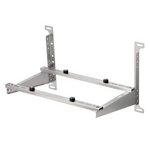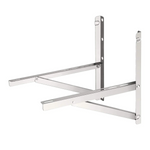Do you think that high humidity levels may be affecting the quality of your life? They probably are; but don’t worry. Everything has a solution. By following these tips, you’ll be able to experience less mold, less mildew, and less musty smells around your home (among many other benefits). Are you ready to improve the quality of your life?
Here are 9 things you can do to beat humidity:
1. Cover your pots while cooking. If you’re going to boil water on the stove, remember to cover the cooking pot with a lid. That’s something very easy to do. Not doing so, leads to excess moisture.

2. Take shorter (and colder) water baths. Have you noticed that when you take long warm showers, your mirror ends up full of water droplets? This is due to condensation, which leaves your bathroom pretty damp. And then, mold shows up.

If you reduce the duration of your bathing time and take colder showers, moisture will decrease significantly. And that’s not all... There are additional advantages to taking cold showers:
- Your skin and hair will look radiant, your body will be more toned, and you can even lose some weight. (For additional information read about the Benefits of Cold Showers).
- You’ll save on your energy/gas and water bills.
- Plus, you’re saving the planet!
3. Dry your clothes outside. According to Professor David Denning from the Manchester National Aspergillus Center, when clothes are dried inside our homes, huge quantities of water are released. He states that “one load of wet washing contains almost two liters of water.” Because of this, humidity levels can increase up to 30% (as mentioned in this article by the Huffington Post). So, to prevent the development of these conditions loved by fungus, it’s better to dry out clothes outside if you don’t own a tumble dryer.

4. Install exhaust fans. If you still don’t have them, install exhaust fans inside your bathroom and kitchen. These spaces are usually very moist, so you’d better do something if you don’t want mold and mildew to start showing around. How do they work? They suck up excess humidity and release it outside.
5. Use fans. Although fans don’t suck up moisture, they do help when it comes to ventilating your space. They help to redistribute air, so they can send some air from your AC to the rooms that need it. They will make you feel fresher too.

6. Turn on the AC. When turned on, most ACs remove moisture from the air (that’s why water comes out from them). But that’s not an AC’s main function; so they’re more of an additional help, rather than something that can work exactly like a dehumidifier. Nonetheless, they definitely help dehumidifiers improve their efficiency.
7. Temporarily take the plants outside. We love plants, and although it’s nice to have them around, we suggest to take them out or just leave very few inside during humid seasons. They sweat too. Did you know that?

8. Clean the drains. Believe it or not, if you don’t clean up the drains, excess water will make it to your home. So make sure to do the proper maintenance.
9. Get a dehumidifier. Dehumidifiers are the most effective way of getting rid of large levels of humidity. They’re very efficient because they’ve got built-in systems that suck up the air, plus a tank to collect all the water from excess humidity. Internal hygrometers are included, so you can set up your desired average relative humidity level in your room. Remember that recommended levels are between 30% and 55%, so you should turn it on if your room’s level is higher than 55%, You’ll notice the benefits of using one really quickly. (Looking for one? You can find models for household use here).
Photo by: Bentz Creative
Want more tips like these?
Subscribe to our newsletter so you don't miss out any of our latest tips:
Questions or comments?
Feel free to contact our customer service team at support@tosotdirect.com.
Use information at your own risk: The information presented is intended for educational purposes only and is not intended to be a substitute for professional advice, diagnosis or treatment. Never disregard professional medical or home improvement advice. The information and suggestions should be discussed with a professional. You are responsible for independently verifying the information if you intend to rely upon or use it in any way. You use all information at your own risk.








4 comments
Great information. Thank you!
These are great tips! Thank you!!
Hi Mark,
We’re so glad to know that you could learn something new! You’ve made our day. Keep learning always!
I just stumbled on your sweepstakes, learned a lot, which I did not know. I thought I knew more at 76, not less, Now I know more !